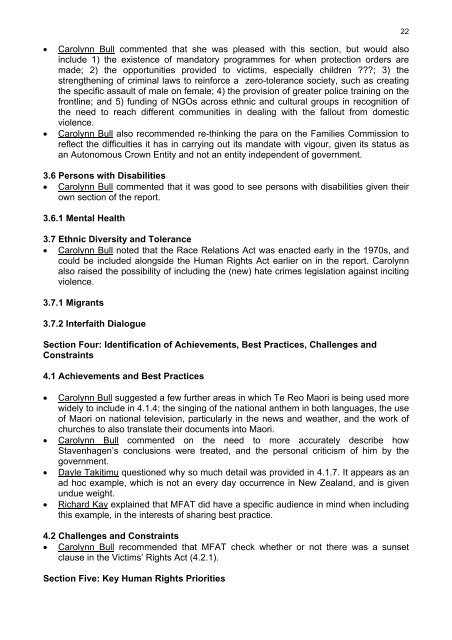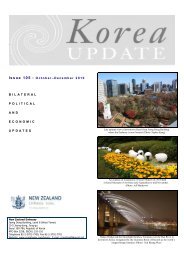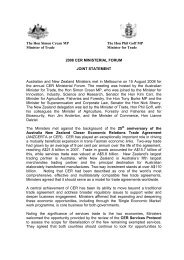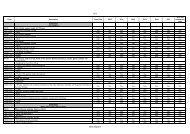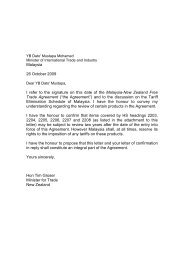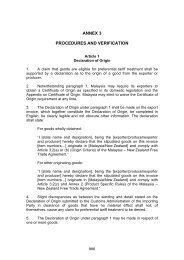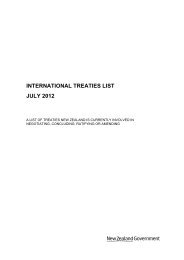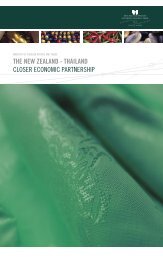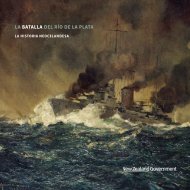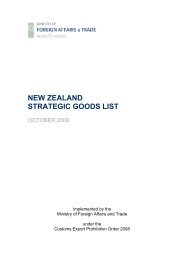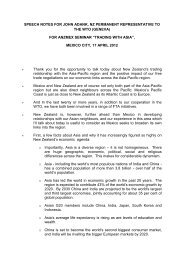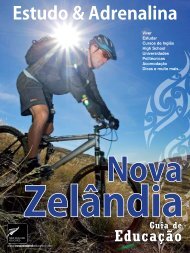New Zealand's National Universal Periodic Review (UPR) Report ...
New Zealand's National Universal Periodic Review (UPR) Report ...
New Zealand's National Universal Periodic Review (UPR) Report ...
- No tags were found...
You also want an ePaper? Increase the reach of your titles
YUMPU automatically turns print PDFs into web optimized ePapers that Google loves.
• Carolynn Bull commented that she was pleased with this section, but would alsoinclude 1) the existence of mandatory programmes for when protection orders aremade; 2) the opportunities provided to victims, especially children ???; 3) thestrengthening of criminal laws to reinforce a zero-tolerance society, such as creatingthe specific assault of male on female; 4) the provision of greater police training on thefrontline; and 5) funding of NGOs across ethnic and cultural groups in recognition ofthe need to reach different communities in dealing with the fallout from domesticviolence.• Carolynn Bull also recommended re-thinking the para on the Families Commission toreflect the difficulties it has in carrying out its mandate with vigour, given its status asan Autonomous Crown Entity and not an entity independent of government.3.6 Persons with Disabilities• Carolynn Bull commented that it was good to see persons with disabilities given theirown section of the report.3.6.1 Mental Health3.7 Ethnic Diversity and Tolerance• Carolynn Bull noted that the Race Relations Act was enacted early in the 1970s, andcould be included alongside the Human Rights Act earlier on in the report. Carolynnalso raised the possibility of including the (new) hate crimes legislation against incitingviolence.3.7.1 Migrants3.7.2 Interfaith DialogueSection Four: Identification of Achievements, Best Practices, Challenges andConstraints4.1 Achievements and Best Practices• Carolynn Bull suggested a few further areas in which Te Reo Maori is being used morewidely to include in 4.1.4: the singing of the national anthem in both languages, the useof Maori on national television, particularly in the news and weather, and the work ofchurches to also translate their documents into Maori.• Carolynn Bull commented on the need to more accurately describe howStavenhagen’s conclusions were treated, and the personal criticism of him by thegovernment.• Dayle Takitimu questioned why so much detail was provided in 4.1.7. It appears as anad hoc example, which is not an every day occurrence in <strong>New</strong> Zealand, and is givenundue weight.• Richard Kay explained that MFAT did have a specific audience in mind when includingthis example, in the interests of sharing best practice.4.2 Challenges and Constraints• Carolynn Bull recommended that MFAT check whether or not there was a sunsetclause in the Victims’ Rights Act (4.2.1).Section Five: Key Human Rights Priorities22


